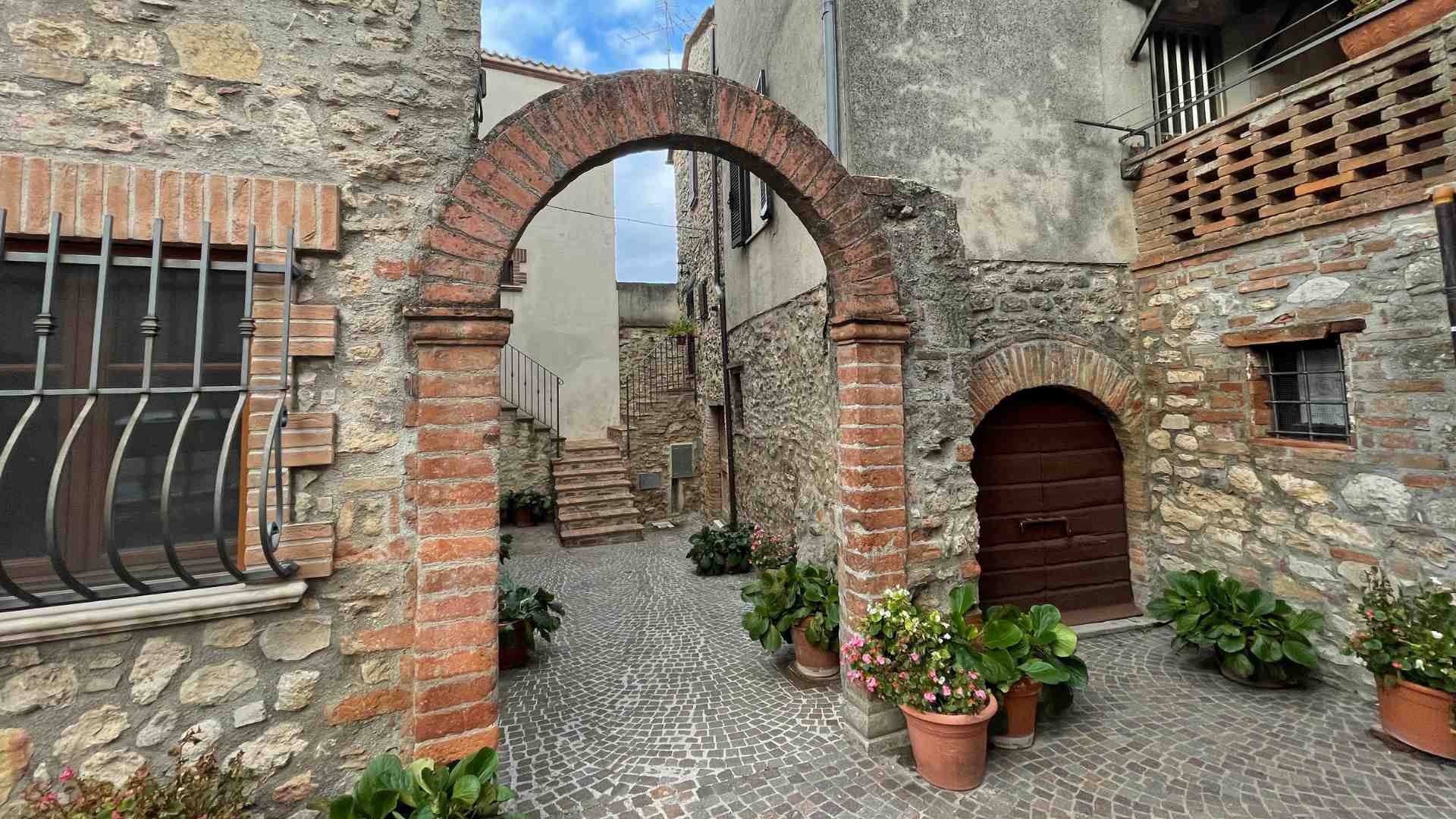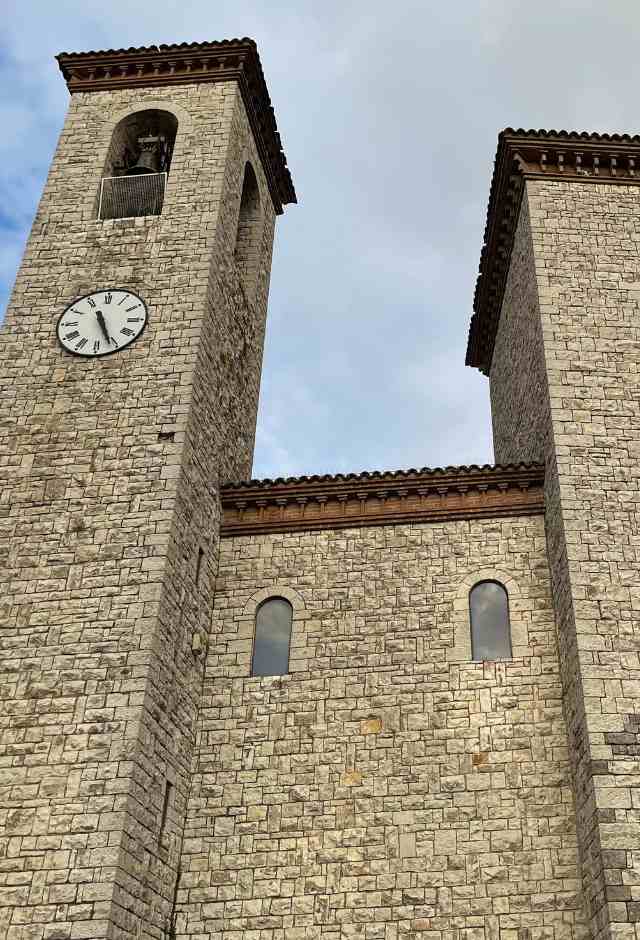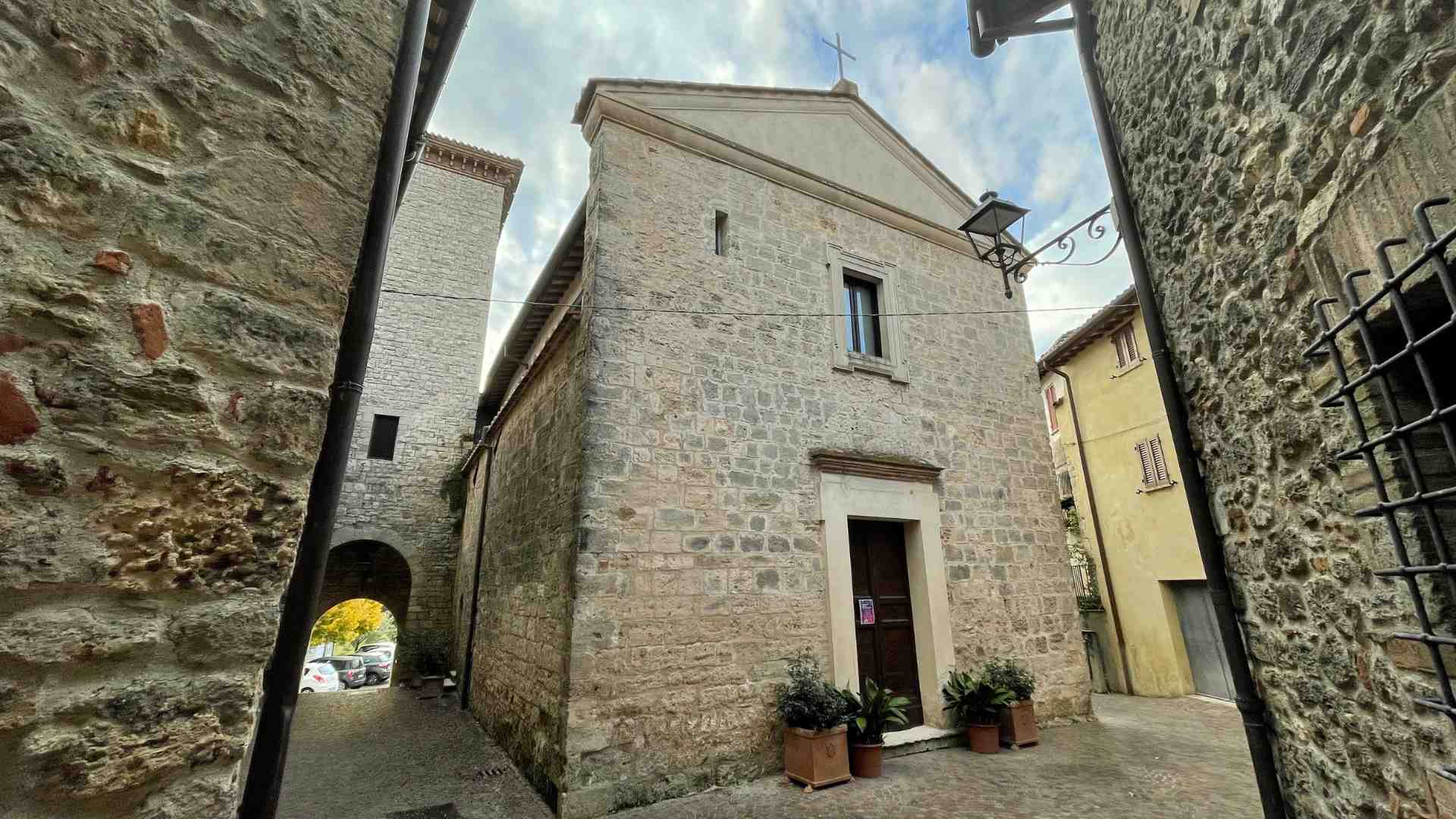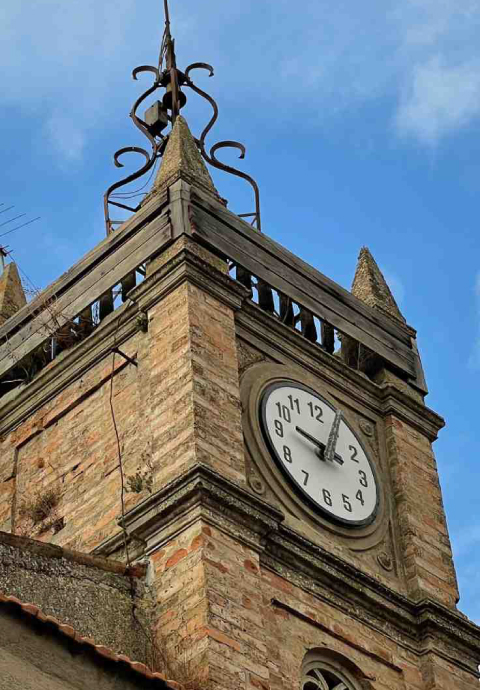
punto di interesse
point of interest


Casteltodino encircled by its walls, which conceal winding alleys that open into beautiful squares and evocative, stands on high ground along the road (SP9) that now joins Acquasparta to Montecastrilli of which it is a hamlet.
There aren’t documents which tell us about the origins of Casteltodino but, the eagle todina that stands out on the door of the village, already tells of its close relationship with the nearby power turderde.
The first agglomeration was built–like the nearby castles of Quadrelli and Ciciliano–around one of the villas that were formed following the distributions of territories to Octavian veterans around the territory of Todi.
One tradition has it that the gens Tuditana – of which Caius Sempronius Tuditanus is the most illustrious representative – was the one who founded the fort that later became first Castel Tuditano and then Casteltodino.
Probably it was pagus of the nearby municipality of Carsulae until it became, in the 10th century property of the Arnolfi attested by donations of land and churches to the Monastery of San Nicolò of San Gemini and the Monastery of Farfa.
Among the various vicissitudes of the time, the 1366 siege perpetrated by John the Acute was the one that affected Casteltodino the most, as well as the whole territory.
The following years saw the castle play a leading role in clashes between Guelphs and Ghibellines, and between the Atti and the Chiaravalle.
The descent of Charles VIII with the Landsknechts – at the end of the 15th century – did not spare this territory, which, however, was always supported by the Todi power that, over the years, always maintained a castellan there because of the importance of the place, a crossroads of the Petrosa road – also known as the road of the Seven Valleys – that from Todi joined there to the Amerina road and became one of the most important communication routes with Rome.

Casteltodino encircled by its walls, which conceal winding alleys that open into beautiful squares and evocative, stands on high ground along the road (SP9) that now joins Acquasparta to Montecastrilli of which it is a hamlet.
There aren’t documents which tell us about the origins of Casteltodino but, the eagle todina that stands out on the door of the village, already tells of its close relationship with the nearby power turderde.
The first agglomeration was built–like the nearby castles of Quadrelli and Ciciliano–around one of the villas that were formed following the distributions of territories to Octavian veterans around the territory of Todi.
One tradition has it that the gens Tuditana – of which Caius Sempronius Tuditanus is the most illustrious representative – was the one who founded the fort that later became first Castel Tuditano and then Casteltodino.
Probably it was pagus of the nearby municipality of Carsulae until it became, in the 10th century property of the Arnolfi attested by donations of land and churches to the Monastery of San Nicolò of San Gemini and the Monastery of Farfa.
Among the various vicissitudes of the time, the 1366 siege perpetrated by John the Acute was the one that affected Casteltodino the most, as well as the whole territory.
The following years saw the castle play a leading role in clashes between Guelphs and Ghibellines, and between the Atti and the Chiaravalle.
The descent of Charles VIII with the Landsknechts – at the end of the 15th century – did not spare this territory, which, however, was always supported by the Todi power that, over the years, always maintained a castellan there because of the importance of the place, a crossroads of the Petrosa road – also known as the road of the Seven Valleys – that from Todi joined there to the Amerina road and became one of the most important communication routes with Rome.

The alleys and squares within the walls form an evocative route to be taken on foot and with the right amount of time to admire the millennial beauty of this medieval village.
The Church of St. Bartholomew, now restored, is the most important and oldest place in the historic center, built at the turn of the 11th and 12th centuries and part of the same city walls, it preserves remarkable works.

The alleys and squares within the walls form an evocative route to be taken on foot and with the right amount of time to admire the millennial beauty of this medieval village.
The Church of St. Bartholomew, now restored, is the most important and oldest place in the historic center, built at the turn of the 11th and 12th centuries and part of the same city walls, it preserves remarkable works.

Discover the Church of San Bartolomeo
Reach Collesecco
Reach Quadrelli
Reach Montecastrilli
A walk through downtown Montecastrilli
The territory of Montecastrilli
discover all the points of interest of the village
Information, appointments and travel proposals on:
The Progressive Web App is part of the project “Le Terre dei Borghi Verdi”, realized in collaboration and with the contribution of Regione Umbria – Assessorato al Turismo
©2021 Le Terre dei Borghi Verdi
Le Terre dei Borghi Verdi
Welcome in Southern Umbria,
where the slowness becomes value
Information, appointments and travel proposals on:
The Progressive Web App is part of the project “Le Terre dei Borghi Verdi”, realized in collaboration and with the contribution of Regione Umbria – Assessorato al Turismo
©2021 Le Terre dei Borghi Verdi